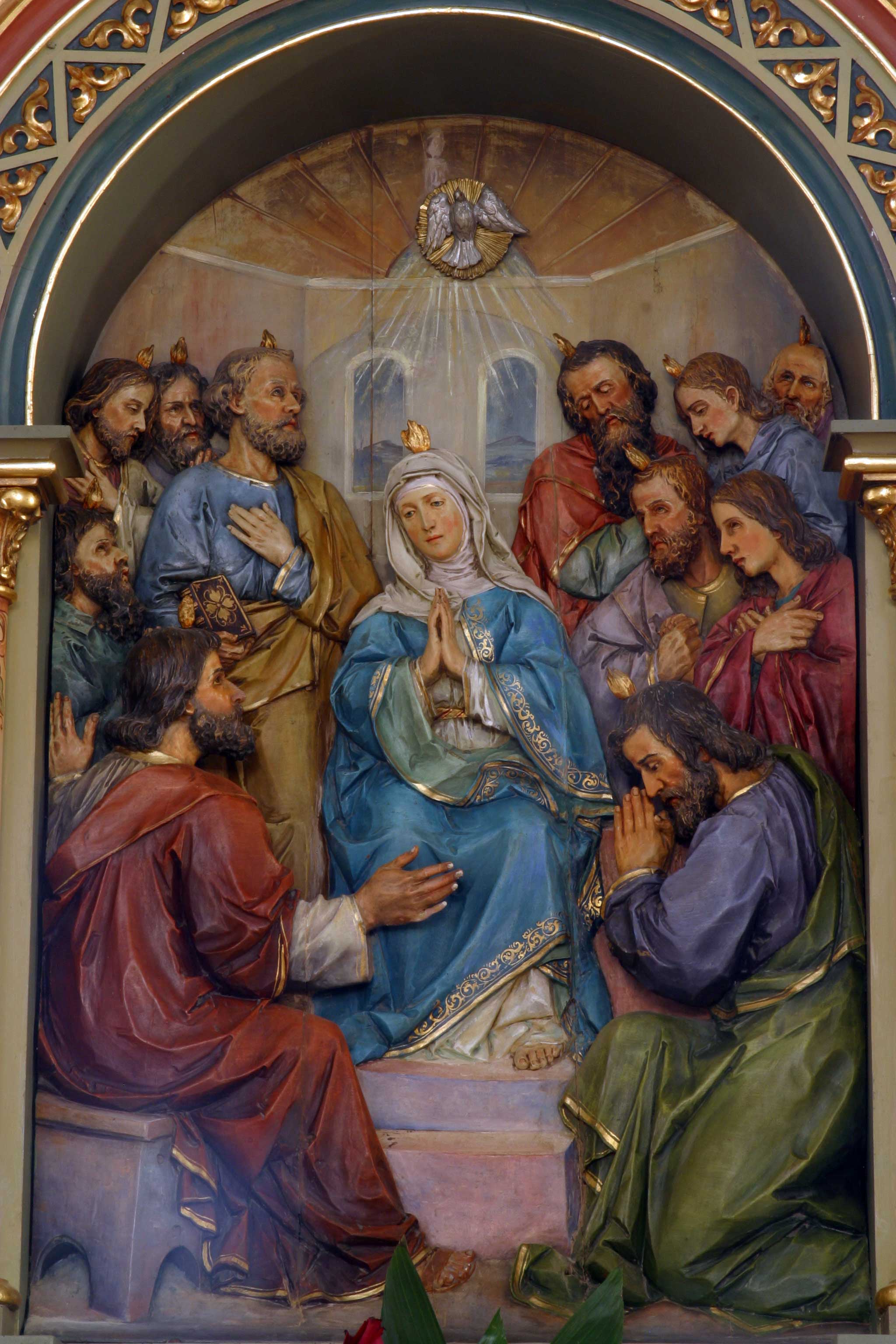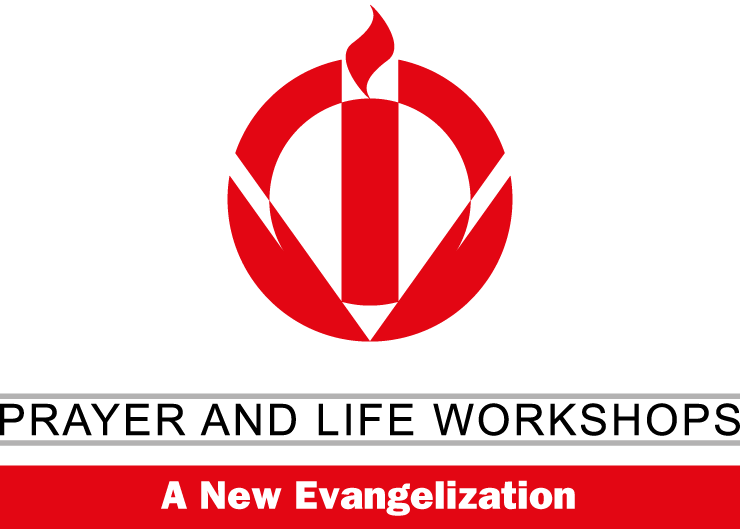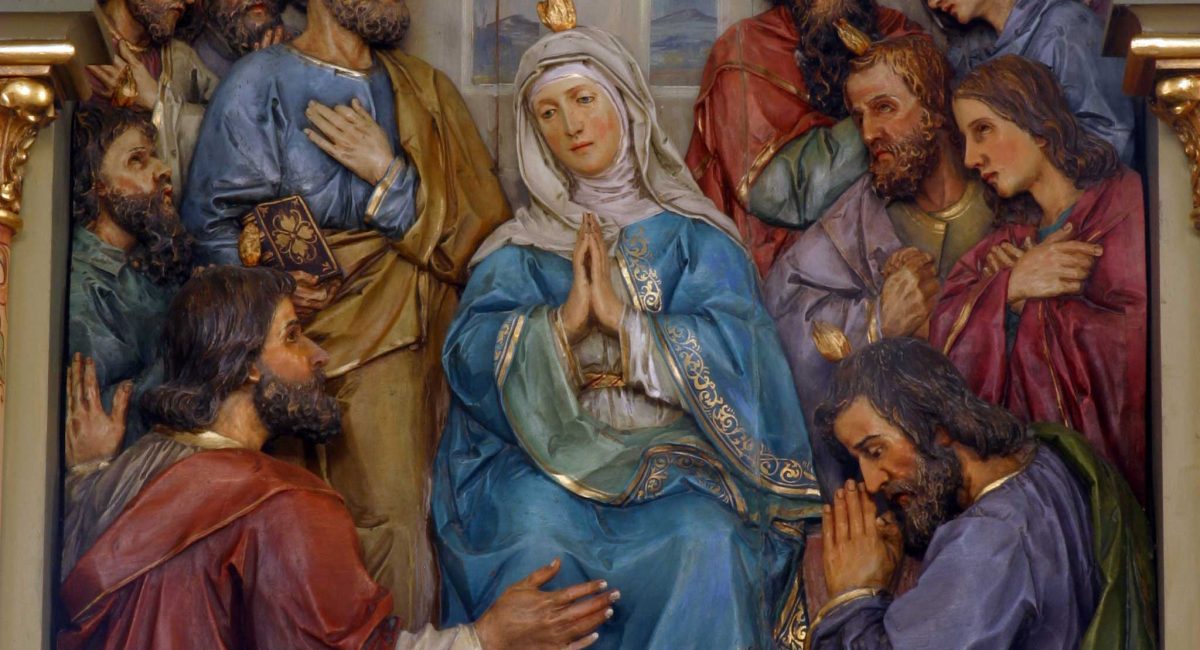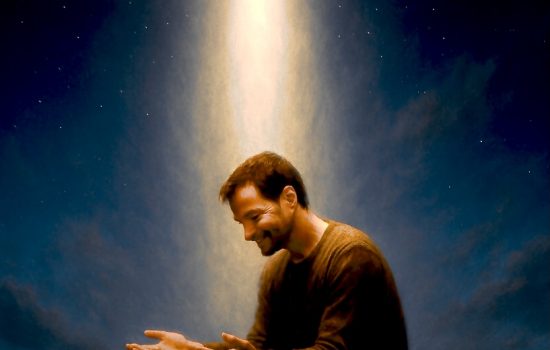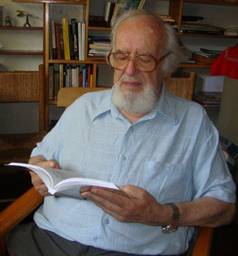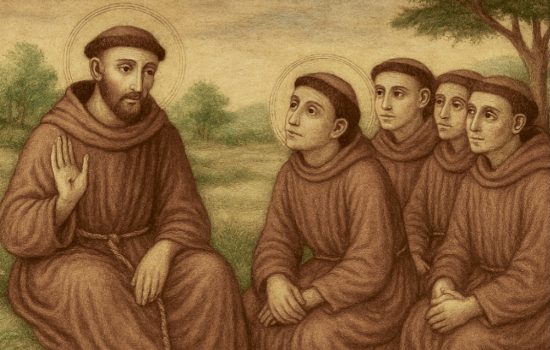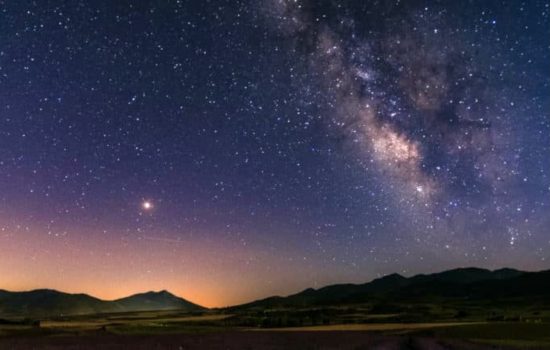Whenever Mary is present we note a strong presence of the Holy Spirit. This is happening from the very day of the Incarnation. On that day it was the “Person” of the Holy Spirit, who took total possession Mary’s universe. From that day on, the presence of Mary ignites a spectacular illumination of the Holy Spirit.
When Elizabeth heard Mary’s greeting, she was immediately filled with the Holy Spirit. (Luke 1:41) When this humble Mother was in the temple with child in her arms waiting her turn for the rite of Presentation, the Holy Spirit took possession of the ancient Simeon prompting him to pronounce such prophetic and disturbing words.
On that Pentecost morning when the Spirit violently intruded upon the world of that little assembly of committed followers of Jesus with fiery tongues of fire and an uncontrollable shaking of the earth –– were not these people guided by the Mother? (Acts 1:14) I don’t know precisely what class of relationship exists, but some mysterious and deep bond is evident between these two “persons.”
The Acts of the Apostles is called the “Gospel of the Holy Spirit,” and rightly so. It is extraordinary. No chapter exists without mentioning the Holy Spirit three or four times. This book records how the Church began. Therefore, just as we can say that the early Church was guided by the invisible presence of the Holy Spirit; can we also not conclude that it was swayed by the silent presence of Mary as we have demonstrated above?
In any case, if the apostles, with Mary, received all their powers on that dawning of the day of Pentecost, certainly we can imagine with what plenitude she received those gifts, she, who had previously known the indwelling and fruitful presence of that same Spirit within her very flesh. Could it be that all the boldness and strength with which the Church was developing in its early days, might have also been, perhaps, a participation in the Mother’s gifts?
Indeed, the most precise title that is bestowed on Mary is this: Mother of the Church.
Extracted from the book “The Silence of Mary” by fr.Ignacio Larrañaga
